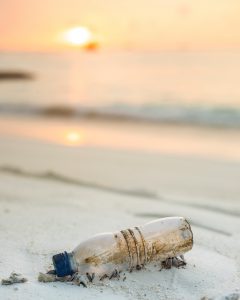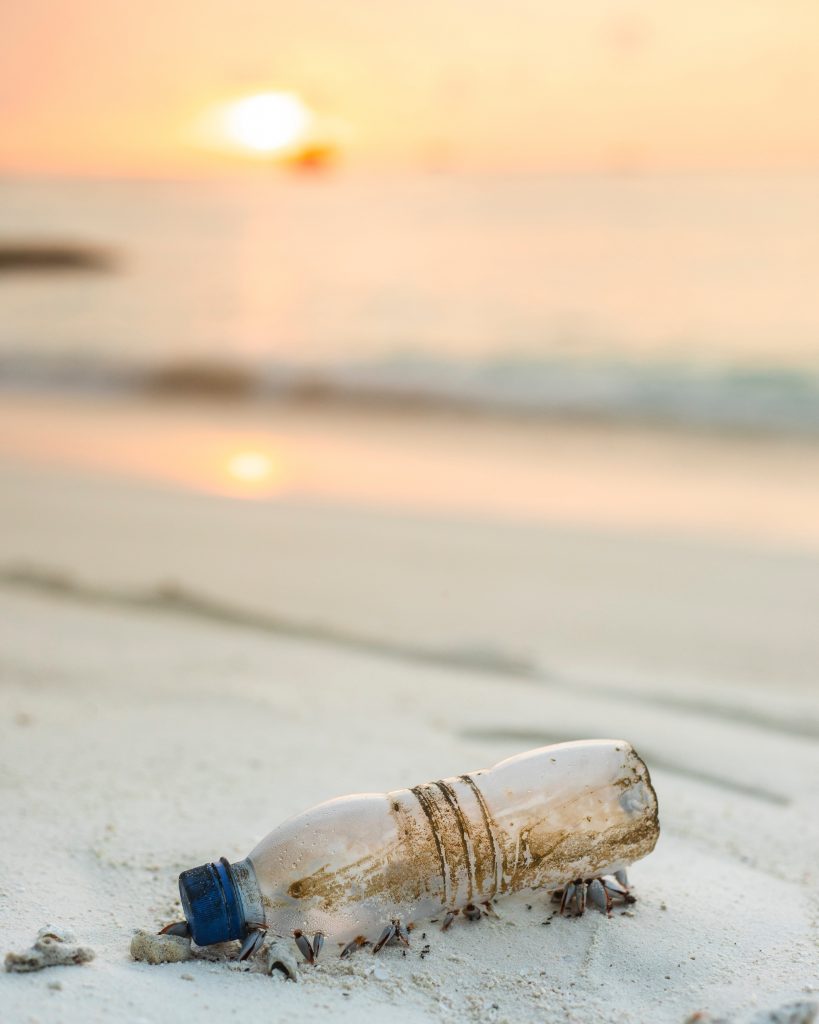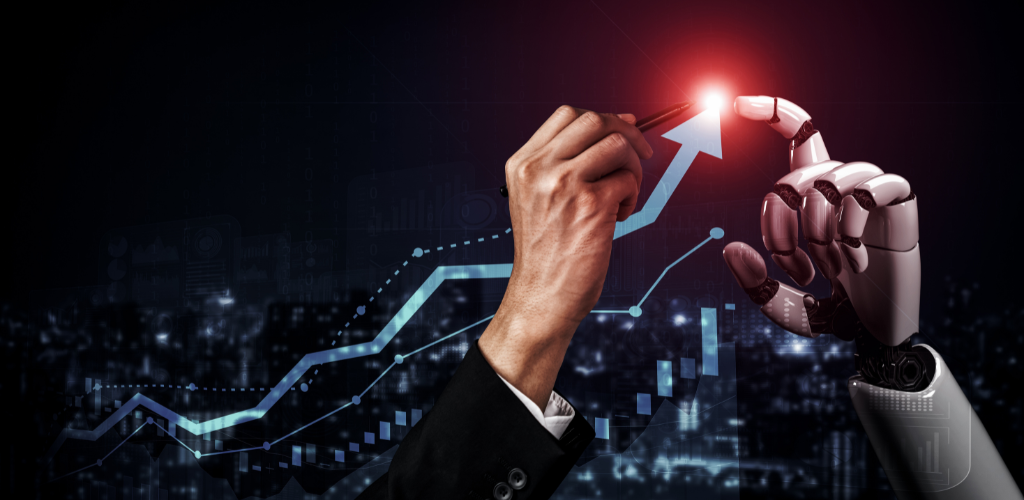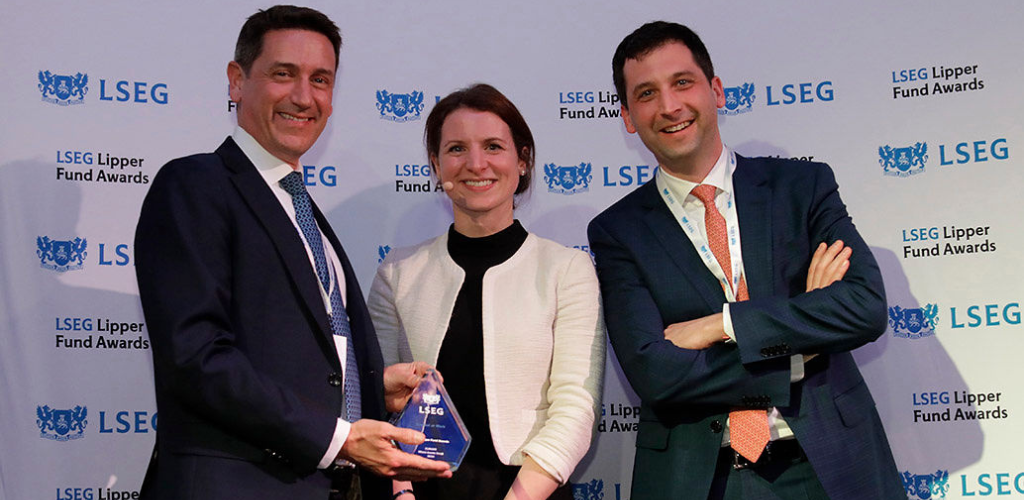These words echoed for a long time in my head after a very inspiring conversation with the most well-known name in Luxembourg in the matter of “Economie Circulaire”: Mr. Romain Poulles from PROgroup.
It all started quite harmlessly: a few months ago Lorenzo Bertelli, the heir to the Prada fashion group, who quit his career as a Formula 2 pilot to devote himself to the family business, announced that he will be relying on RE-Nylon in the future. This new tissue consists of plastic waste and fishing nets from the sea as well as other waste from the textile industry. RE-Nylon is supposed to make the word recycling and the cleaning of our polluted planet fit for the world of luxury and fashion.

In fact, hardly a day goes by without us being shaken by horrific images of our oceans and the suffering fauna (and flora) due to our polluting lifestyle: from turtles trapped in fishing nets to birds stuffed with plastic waste and miserably dying of it. The list of our waste, be it plastic, aluminium or other materials that do not dissolve in nature overnight or even not at all, is shamefully long.
However, the realization that we have done our planet a disservice in the last 100-200 years and that we urgently need to do something about it, is finally spreading in our collective consciousness. It inspires not only the ecologists, but now also increasingly the scientists and even the economists.
The devil wears Prada – but can he also dispose of it?
Prada now has discovered the marketing effect of recycling, a concept that many – like me to this day – confuse with that of the circular economy. However, as Mr Poulles explains, recycling represents the version “less bad”. Very few substances – and certainly not those that we have transformed – can be recycled infinitely or without negative consequences. Particularly in the case of a substance composed of several elements (a polymer), we reach the end of the chain quite quickly. We are not yet in the Circular Economy but still in the linear Economy. The moment the devil wants to dispose of his luxury Re-Nylon jacket, the question arises: how can we take this substance/tissue apart in such a way that the individual elements can disappear in a way that it has no negative or even a positive impact on nature? Knowing full well that burning our waste, including the Re-Nylon jacket, is not a sustainable solution, because even the receptiveness of heaven, however infinite it may seem to us, is definitely limited. The devil probably won’t care, the future generations, whose survival depends on a healthy fauna and flora, will.
What if the solution were to turn away from possessions?
As its name suggests, the Circular Economy is based on a cycle similar to that of nature: in nature, there simply is no waste since all the raw materials processed by an organism are returned back to nature in such a way that they in turn produce a benefit.
The term “benefit” is an extremely important element in the concept of the circular economy: how else can the various economic players be persuaded to adopt its concept? Ultimately, we live in a society that requires us to earn money to secure jobs and livelihoods.
Access over ownership!
What if we no longer buy the light bulb but the light? Or purchase the journey instead of the car? The washing cycles instead of the washing machine? The air purifying properties of a hired carpet, instead of buying the carpet? Enjoy the entertainment of a movie or music instead of owning a DVD or CD or vinyl record?
As absurd as these ideas may seem at first glance: these concepts and companies, earning money with them, already exist and most probably you already know some names: Véloh, Bla Bla Car, Uber, Netflix, Spotify, Tarkett, Interfloor, Philipps, AirBnB … maybe you even know the charming Alix Bellac with its Luxembourg startup company dressinthe.city, which rents out high-quality dresses and accessories for special occasions?
Light bulbs and many other products deliberately have a limited lifespan (planned obsolescence), as this is the only way to guarantee the survival of a company with its workplaces and everything that goes with them. If, however, the company leases the use of its products and not the product itself, then it suddenly has a great interest in the product becoming durable (and repairable) for a long time and not ending up as waste in any form in nature and thus irretrievably destroying the raw materials used for it. After much to and fro, Philipps embarked on the experiment three years ago: the German architect Thomas Rau did not want their light bulbs, but only the lumens, i.e. the light. Today this concept is called “light as a service” and look there: these light bulbs don’t (or hardly) break, are even repairable!
We are only at the beginning of this development, but the younger generation – the 20-30 year-olds (from my perspective) – are already showing us the direction into which the economy could tend: away from ownership, towards benefit. Why should I buy a whole car when I only want to get from A to B, why buy a CD when I can stream the music ballast-free …
Why should I just make something less bad when I could make it good?
Why should you fill your cellar with wheelbarrows, ladders, drills, etc., equipment that you will use quite rarely throughout its life, if you can rent it from a nice neighbor for a good bottle of wine and a nice chat or at a central location for a small fee? For example, a drill is used for only 17 minutes in the lifetime of its owner, but almost every household has one. Just think of all the raw materials needed to build such a machine (or everything we use in everyday life).
Another concept of Economie Circulaire is that every product is designed in such a way that it can be flexibly adapted, improved, repaired or relocated at any time. For example, parking garages that are suddenly no longer needed (a realistic idea, considering that we are on the verge of the breakthrough of the autonomous vehicle) can either be removed and rebuilt elsewhere, or converted into a residential house, office building or for other purposes. The final goal of the Circular Economy is that a resource is used in a way that makes it infinitely usable. In this way, the planet is not exploited any further, which in the end means that no more waste is produced – which in the end no longer has to be recycled.
All these elements of the Economie Circulaire that I have described in these lines are not utopias: some of them are still in a very promising test phase. For other companies – such as Netflix – this business model is already worth billions.
Ideally, every intervention will not only benefit the individual but also the environment: Mr. Poulles’ company building, for example, has not impaired but multiplied the biodiversity of the site. The concept is rounded off by fruit trees, a herb garden and a day nursery for the children. The green house walls and roofs quadruple the natural area for insects and bees to produce their own honey, which was offered to me as a gift when I entered his office.
It is therefore possible that the solution to the environmental catastrophe caused by the industrial revolution will ultimately come from science, industry and business. In any case, Mr Poulles believes in the power of contagion and its doubling theory: if everyone infected by the Circular Economy virus infects a person every day, who in turn infects one on his side … how long will it take for 7.7 billion people to be convinced?
Article published in “De Revue” by Nathalie Meier-Hottua, Wealth Manager for CapitalatWork.



